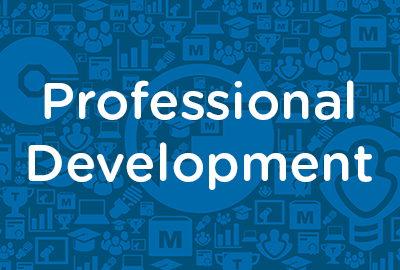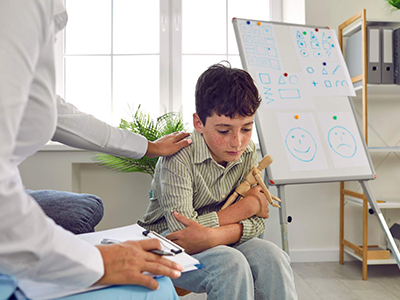 |
Building Upward: Resuscitation of Anaphylactic Shock Part 3—Scenario 2 |
1.00 |
In this second of three scenarios, we discuss the transport decisions that should be considered when dealing with the potential of a medical illness and a traumatic injury. Vanessa and Medical Director Dr. Jeremy Cushman discuss a patient who has a motorcycle accident that was caused by a beesting. This exciting discussion will effectuate a review of the minimum competencies of medical and trauma care at the EMT level. Final Exam: Please read each question carefully. You will have two attempts to gain a 70% or higher on this exam. If you are not successful in two attempts, you are welcome to take the course again to gain the certification. |
 |
Protecting Yourself While Responding to Earthquakes |
2.00 |
This course covers the importance of earthquake safety and protecting yourself before, during, and after an earthquake. It also covers how first responders should keep themselves safe when responding to an earthquake scene. |
 |
Cross-Cultural Business Communication: Overcoming Communication Barriers (Instructor Guide) |
1.00 |
There are several barriers that can affect cross-cultural communication. Generally, barriers have a negative effect on communication because they might distort the speaker’s message or the listener’s understanding. It is important to understand these barriers to communicate effectively with people from different cultures.
In this course you will learn to: identify common cross-cultural communication barriers, overcome communication barriers and avoid cultural bias, and employ qualified interpreters and communicate through them.
This Instructor's Edition of this course includes notes and suggestions to assist you in presenting the material, whether in an in-person classroom setting, or as an instructor-led online or distance-learning course. It also provides you with the answers to questions found in mid-lesson activities, as well as in the quiz that concludes the course. |
 |
Sales: Qualifying |
0.50 |
In this course, you will learn how to improve your listening skills to better understand customers’ needs and decision-making criteria. You will also learn how to use questioning techniques to help customers recognize the benefits of your products and services. |
 |
Sales: Presenting |
1.00 |
In this course, you will learn how to create a selling strategy by defining the players, relationships, and personal stakes; how to identify the five types of buyers; and how to prepare to deliver a presentation by writing an elevator pitch and handling customers’ objections. |
 |
Sales: Completing |
0.75 |
In this course, you will learn how to negotiate with the prospect to reach a sale agreement. You will also learn how to complete a sale by preparing trial closing questions and a final closing question. |
 |
Managerial Leadership: Motivating Employees Through Change (Instructor Guide) |
0.50 |
Your organization’s vision was created to inspire and unite the members of the organization as they work toward achieving common goals. Change can distract employees from the vision because going through the change process can be intensely personal and emotional. Remembering the vision and its purpose can keep your employees focused on their role in the company.
In this course you will learn to: motivate employees through a change and prepare for difficulty, and overcome resistance and resolve conflict.
This Instructor's Edition of this course includes notes and suggestions to assist you in presenting the material, whether in an in-person classroom setting or as an instructor-led online or distance-learning course. It also provides you with the answers to questions found in mid-lesson activities, as well as in the quiz that concludes the course. |
 |
Trauma and Its Impact on Education |
1.50 |
Any professional employed in a school must understand the adverse experiences that students have can directly impact their experience in the classroom. This course dives into the definition of trauma, the impact of trauma on the brain, and how trauma can manifest in the classroom. It is important to know how to help students who have experienced trauma in their lives. This course will also touch on the importance of self-care for professionals who work with students who have experienced trauma. This course will help you develop new knowledge about students and help you understand your role as an educational professional.
Trauma and Its Impact on Education is the first course in a series of two trauma courses. After this course, be sure to check out Trauma-Informed Practices. |
 |
Growing as a Professional in School-Age Programs |
2.00 |
Caring for school-age children in a school-age program is a relatively new field of work. The field itself is constantly changing and expanding. In view of this "newness" and change, those who work in the field are playing an important role in shaping and defining what it means to be a school-age professional. They are guiding school-age care as an emerging profession. In the search for a definition of professionalism in school-age programs, it is helpful to examine the common characteristics of professionalism in other fields. The next step is identifying qualities and characteristics associated with professional behavior in the school-age field, itself. As a school-age professional, it is also important to understand the importance of acting as a public policy advocate on behalf of school-age children and their families. An important part of professionalism is continued personal growth and development in relation to the field. This requires using appropriate resources and strategies to further individual professional development. It also requires considering what constitutes ethical conduct in the field and developing an ongoing commitment to ethical behavior. |
 |
Suicide Prevention |
1.25 |
This course covers suicide prevention measures and suicide prevention organizations as well as the disparities found in suicide data.
After completing this course, you will be able to:
Distinguish the disparities in suicide statistics
Identify the risk factors that can lead to suicide
Apply techniques to help prevent suicide
Describe the work that suicide prevention programs are doing |











